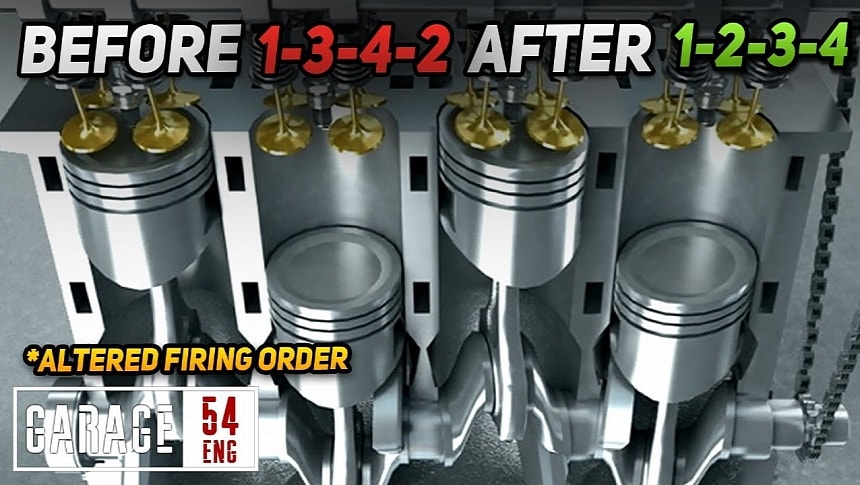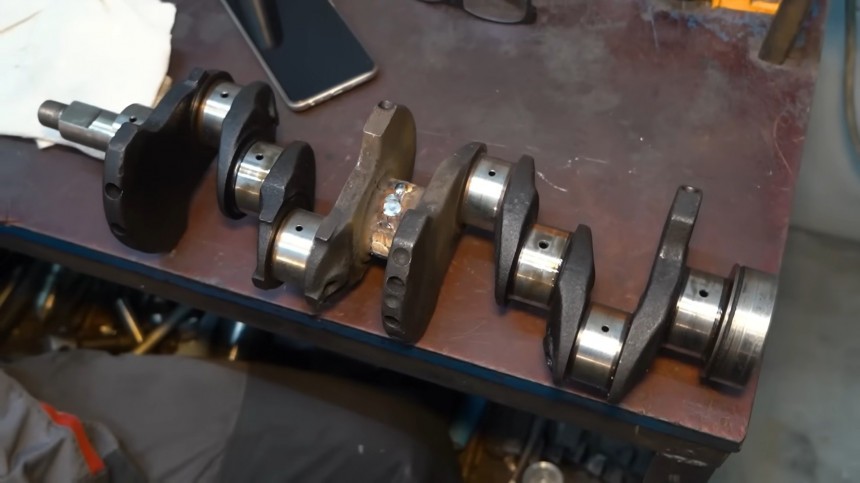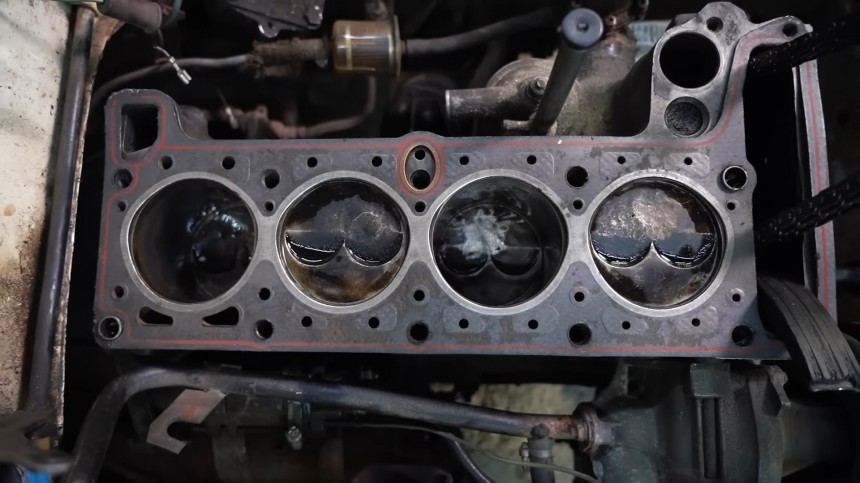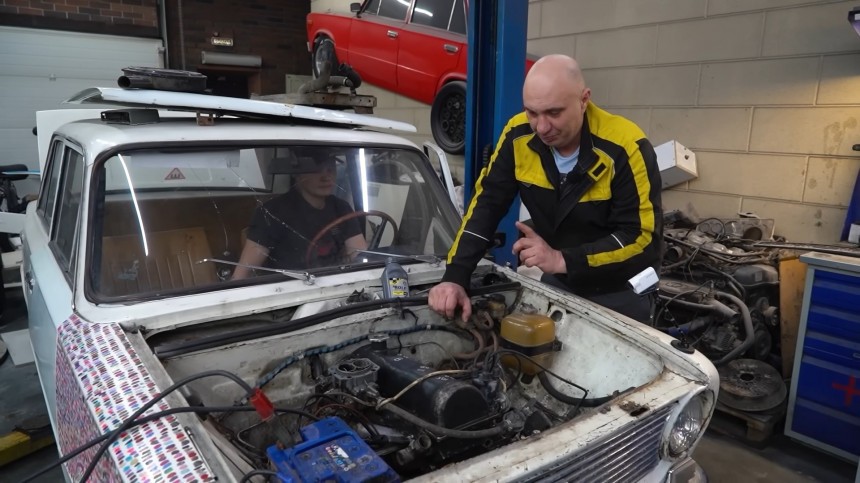An internal combustion engine is a precise mechanism that works appropriately under stringent conditions, requiring minute and accurate calculations to make it operational. Timing is the keystone of that lump of metal pulsating with every power stroke, and it takes very little to throw an engine off balance. But what if it was done on purpose, just for fun?
Here’s a funny experiment to play with your car nut friends: ask them to pick their favorite number from 4, 6, 8, 10, or 12. Now, ask them to count from 1 to that particular number. Chances are the real piston loyalists will recite their preferred firing order by heart, in a dyslexic-like fashion, seemingly completely ignoring mathematics. Understandable, we all have that one friend who knows that a Big Bang is not the beginning of everything but two pistons firing simultaneously.
As it turns out, most combustion engines have to harmonize various specific physics requirements to not tear themselves apart, let alone function well. It is one of those details that don’t make sense to regular civilian end-users who don’t have an engineering approach to things. Let’s face it: just because we operate a device doesn’t necessarily imply we know precisely how it’s built, how it works, or why it is designed in that specific way and not another.
Take the humble four-cylinder engine, for example –four pistons, four strokes, four pairs of valves (at least), four sparkplugs, and four connecting rods. All of the above work in conjunction to turn the crankshaft. It’s pretty straightforward: the pistons reciprocate up and down, the con rods push against the bearings on the crank, and magically, the wheels turn.
What’s messing up the OCD in any non-tech-inclined person is the piston travel detail: while 1 and 4 ascend, the other two go down, and vice-versa. That’s fine; they dance in pairs, so a nearly-perfect balance is always maintained. As we know, the piston movement is dictated by the fuel explosion inside the combustion chamber. This creates tremendous pressure, which forces the piston away from the head, setting everything in motion (literally).
And here’s the OCD-kicking bit: the cylinder ignition occurs in this specific order: 1-3-4-2. Remember the practical joke for the gearheaded friend? That’s what would fall out of their mouth, but why isn’t it the regular, universally agreed succession of 1,2,3 and 4? Because physics, that’s why. The crankshaft endures enormous stress when an engine is running, and it needs precise alignment to stay in one piece, with all those considerable forces trying to break it into bits and shreds.
The apparently non-sensical 1-3-4-2 is apparent when the balance is a prime goal: too much stress on either end of the shaft will yield abnormal vibration levels, rapidly deteriorating the engine. It's not something we’d like to deal with every six months – rebuilding the engine or replacing it altogether.
But what would be so bad about having an inline-four running in this orderly fashion of mathematical descent: 1-2-3-4? Well, tremors would happen, quickly followed by uneven motor heating. But will a car such-modified still be able to drive? Yes, yet it would – and it is demonstrated by the never-compromising team of mechanics from Siberia, Garage 54.
Yes, they did it: they took a Lada engine and altered its internals to run in this ascending manner instead of its standard firing order. That wouldn’t be so hard to do with the proper equipment, namely an adapted crankshaft and a synchronized distribution system. So far, no motor makers have readily available crankshafts adapted to run in the specified fashion, so the Russians had to make one themselves.
That’s easy – cut one up, turn half of it 180°, welded back together, and that’s it. Right, no sooner said than done. With the crank realigned with eyeball accuracy, the Novosibirsk-based piston hobbits modify the camshaft lest the valves kiss the pistons. Again, using no precision tools (or paying particularly great respect to smoothness), the Garage 54 band has pulled it off. After all, they’re notorious for their irresistible attractions for playing with fire (pun intended –and I can’t blame them, seeing how winter is wintering there now).
The Lada engine runs – eventually after the distributor is set up correctly – and Vlad Barashenko, the regular host of the channel, claims the non-mainstream contraption offers the same performance as the classic architecture. Not with the same ease of operation, as the vibrations are strong enough to wake up a seismograph, but that’s not the point.
Just because you shouldn’t doesn’t mean you can’t, and this is precisely what the merry bunch of wrenchers demonstrated yet again. Consecutive firing order is a working configuration but is not very practical. Granted, their test mule is a Soviet-era built Lada so that the mixed-up crankshaft wouldn’t add noticeable discomfort to the already rugged ride. However, the purpose of this experiment was not to find the best way to appease Big Capitalist Automotive but to prove that not everything is set in stone, especially when it comes to cars.
As it turns out, most combustion engines have to harmonize various specific physics requirements to not tear themselves apart, let alone function well. It is one of those details that don’t make sense to regular civilian end-users who don’t have an engineering approach to things. Let’s face it: just because we operate a device doesn’t necessarily imply we know precisely how it’s built, how it works, or why it is designed in that specific way and not another.
Take the humble four-cylinder engine, for example –four pistons, four strokes, four pairs of valves (at least), four sparkplugs, and four connecting rods. All of the above work in conjunction to turn the crankshaft. It’s pretty straightforward: the pistons reciprocate up and down, the con rods push against the bearings on the crank, and magically, the wheels turn.
And here’s the OCD-kicking bit: the cylinder ignition occurs in this specific order: 1-3-4-2. Remember the practical joke for the gearheaded friend? That’s what would fall out of their mouth, but why isn’t it the regular, universally agreed succession of 1,2,3 and 4? Because physics, that’s why. The crankshaft endures enormous stress when an engine is running, and it needs precise alignment to stay in one piece, with all those considerable forces trying to break it into bits and shreds.
The apparently non-sensical 1-3-4-2 is apparent when the balance is a prime goal: too much stress on either end of the shaft will yield abnormal vibration levels, rapidly deteriorating the engine. It's not something we’d like to deal with every six months – rebuilding the engine or replacing it altogether.
Yes, they did it: they took a Lada engine and altered its internals to run in this ascending manner instead of its standard firing order. That wouldn’t be so hard to do with the proper equipment, namely an adapted crankshaft and a synchronized distribution system. So far, no motor makers have readily available crankshafts adapted to run in the specified fashion, so the Russians had to make one themselves.
That’s easy – cut one up, turn half of it 180°, welded back together, and that’s it. Right, no sooner said than done. With the crank realigned with eyeball accuracy, the Novosibirsk-based piston hobbits modify the camshaft lest the valves kiss the pistons. Again, using no precision tools (or paying particularly great respect to smoothness), the Garage 54 band has pulled it off. After all, they’re notorious for their irresistible attractions for playing with fire (pun intended –and I can’t blame them, seeing how winter is wintering there now).
Just because you shouldn’t doesn’t mean you can’t, and this is precisely what the merry bunch of wrenchers demonstrated yet again. Consecutive firing order is a working configuration but is not very practical. Granted, their test mule is a Soviet-era built Lada so that the mixed-up crankshaft wouldn’t add noticeable discomfort to the already rugged ride. However, the purpose of this experiment was not to find the best way to appease Big Capitalist Automotive but to prove that not everything is set in stone, especially when it comes to cars.
























